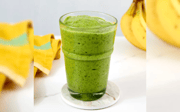7 healthiest condiments you can find at the supermarket, according to registered dietitians
- Replies 0
Condiments can take a good meal and make it great.
But if you're not checking the labels, they can also pile on sodium, sugar, and fat fast.
Health experts agree that what's in your favorite sauce matters just as much as how much of it you use.
This guide outlines the seven best options dietitians recommend right now.
Mustard
No sandwich is complete without it—and mustard earns its spot as one of the healthiest condiments out there.
“It’s low in calories and packs a tangy punch without added sugar. I love it on sandwiches or mixed into marinades. It’s a great alternative to mayo when you're looking for a different flavor profile,” says Brannon Blount, MS, RDN.
Honey
When you want something sweet, honey offers a smarter swap. It’s still sugar, but it contains antioxidant-rich compounds and causes a lower spike in blood glucose.
“Honey is an excellent alternative because, while it is a source of sugar, it’s also full of immune-boosting bioactive compounds,” says Blount. Look for raw, unfiltered brands like Local Hive for the best quality.

Salsa
Salsa isn’t just for chips—it's one of the most nutrient-dense condiments in the grocery store.
“Fresh salsa is typically low in calories and adds texture and flavor. I love it with eggs, grain bowls, or as a salad topper. It’s also a great way to get more veggies in,” says Blount.
Greek Yogurt
Mayo and sour cream are common, but Greek yogurt beats both nutritionally.
“I also swap Greek yogurt in for sour cream or creamy dressings. You can season it with herbs and lemon for a quick, protein-rich topping or spread,” says Blount. Look for plain, unsweetened varieties from brands like Chobani or Stonyfield Organic.
Hot Sauce
Bold flavor doesn’t require a long ingredient list—and hot sauce proves it. “Hot sauce is also my go-to for my seafood dishes,” says Maggie Bell, MS, RD, RN.
Most options are low in calories and free from added sugars or fats. Cholula and Tapatío are reliable picks with minimal additives.
Hummus
Hummus delivers protein, fiber, and flavor in every serving.
“Hummus is a great alternative to mayo or creamy dips, offering fiber, protein, and micronutrients. I spread it on wraps, or use it as a veggie dip. My favorite [store-bought] hummus is Sabra Roasted Garlic, as one serving (two tablespoons) has only 70 calories, 0.5 grams of saturated fat, 125 mg of sodium and zero grams sugar,” says Blount.
Also read: Unlock the secret to a longer life: The diet that has kept people healthiest for 30 years revealed!
Low-Sugar Fruit Preserves
Many jams are loaded with sugar, but better options exist. Low-sugar spreads give you the fruit taste without the crash.
“Low-sugar fruit preserves, however, are a fantastic substitute, as they boast all the fruit flavor you crave without as much added sugar,” says Blount. Smucker’s Low Sugar and Crofters Organic Just Fruit Spread both meet the mark.
What makes condiments more or less healthy?
“The healthiness of a condiment comes down to its ingredients. Condiments made from real, whole-foods are the best choices. If the ingredients can be traced back to nature, that’s a good sign that you’re making a healthy condiment choice,” says Bell.
Stick with options based on vegetables, fruit, herbs, vinegar, nuts, or legumes.
Also read: Discover the brain-boosting diet that enhances your memory and shields you from dementia!
“It’s also smart to watch sodium, especially if you’re using multiple condiments in one meal—it adds up fast,” explains Blount. Ideal picks have less than 250 mg sodium, under five grams added sugar, and fewer than three grams of saturated fat.
“If you look at the label and are unable to pronounce the ingredients or you don’t recognize them, you should find a healthier option,” adds Bell. Simpler ingredient lists generally signal a better product.
Condiments don’t have to be the enemy. Used strategically, they can enhance meals without hurting your nutrition goals.
“Condiments can absolutely fit into a balanced diet—you don’t have to skip them entirely,” says Blount.
Read next: The ultimate guide to an anti-inflammatory diet – eat this, not that!

Are any of your go-to condiments on this list—or are there healthy picks you think we missed? What swaps have worked for your meals? Share your favorites in the comments and help others discover better choices. Let’s build a smarter shopping list together.
But if you're not checking the labels, they can also pile on sodium, sugar, and fat fast.
Health experts agree that what's in your favorite sauce matters just as much as how much of it you use.
This guide outlines the seven best options dietitians recommend right now.
Mustard
No sandwich is complete without it—and mustard earns its spot as one of the healthiest condiments out there.
“It’s low in calories and packs a tangy punch without added sugar. I love it on sandwiches or mixed into marinades. It’s a great alternative to mayo when you're looking for a different flavor profile,” says Brannon Blount, MS, RDN.
Honey
When you want something sweet, honey offers a smarter swap. It’s still sugar, but it contains antioxidant-rich compounds and causes a lower spike in blood glucose.
“Honey is an excellent alternative because, while it is a source of sugar, it’s also full of immune-boosting bioactive compounds,” says Blount. Look for raw, unfiltered brands like Local Hive for the best quality.

7 healthiest condiments you can find at the supermarket. Image source: Gabriella Clare Marino / Unsplash
Salsa
Salsa isn’t just for chips—it's one of the most nutrient-dense condiments in the grocery store.
“Fresh salsa is typically low in calories and adds texture and flavor. I love it with eggs, grain bowls, or as a salad topper. It’s also a great way to get more veggies in,” says Blount.
Greek Yogurt
Mayo and sour cream are common, but Greek yogurt beats both nutritionally.
“I also swap Greek yogurt in for sour cream or creamy dressings. You can season it with herbs and lemon for a quick, protein-rich topping or spread,” says Blount. Look for plain, unsweetened varieties from brands like Chobani or Stonyfield Organic.
Hot Sauce
Bold flavor doesn’t require a long ingredient list—and hot sauce proves it. “Hot sauce is also my go-to for my seafood dishes,” says Maggie Bell, MS, RD, RN.
Most options are low in calories and free from added sugars or fats. Cholula and Tapatío are reliable picks with minimal additives.
Hummus
Hummus delivers protein, fiber, and flavor in every serving.
“Hummus is a great alternative to mayo or creamy dips, offering fiber, protein, and micronutrients. I spread it on wraps, or use it as a veggie dip. My favorite [store-bought] hummus is Sabra Roasted Garlic, as one serving (two tablespoons) has only 70 calories, 0.5 grams of saturated fat, 125 mg of sodium and zero grams sugar,” says Blount.
Also read: Unlock the secret to a longer life: The diet that has kept people healthiest for 30 years revealed!
Low-Sugar Fruit Preserves
Many jams are loaded with sugar, but better options exist. Low-sugar spreads give you the fruit taste without the crash.
“Low-sugar fruit preserves, however, are a fantastic substitute, as they boast all the fruit flavor you crave without as much added sugar,” says Blount. Smucker’s Low Sugar and Crofters Organic Just Fruit Spread both meet the mark.
What makes condiments more or less healthy?
“The healthiness of a condiment comes down to its ingredients. Condiments made from real, whole-foods are the best choices. If the ingredients can be traced back to nature, that’s a good sign that you’re making a healthy condiment choice,” says Bell.
Stick with options based on vegetables, fruit, herbs, vinegar, nuts, or legumes.
Also read: Discover the brain-boosting diet that enhances your memory and shields you from dementia!
“It’s also smart to watch sodium, especially if you’re using multiple condiments in one meal—it adds up fast,” explains Blount. Ideal picks have less than 250 mg sodium, under five grams added sugar, and fewer than three grams of saturated fat.
“If you look at the label and are unable to pronounce the ingredients or you don’t recognize them, you should find a healthier option,” adds Bell. Simpler ingredient lists generally signal a better product.
Condiments don’t have to be the enemy. Used strategically, they can enhance meals without hurting your nutrition goals.
“Condiments can absolutely fit into a balanced diet—you don’t have to skip them entirely,” says Blount.
Read next: The ultimate guide to an anti-inflammatory diet – eat this, not that!
Key Takeaways
- Many supermarket condiments are loaded with sodium, sugar, and unhealthy fats, but better options are widely available.
- The healthiest condiments are made with simple, whole-food ingredients and fewer additives.
- Registered dietitians recommend options like mustard, hummus, salsa, and Greek yogurt for flavor without compromise.
- When buying, check the label for low sodium, low added sugar, and ingredients you recognize.






